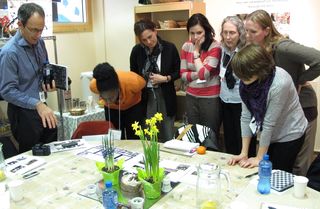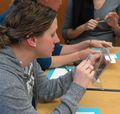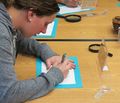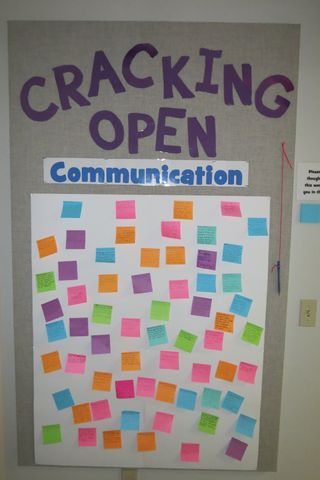What do visitors focus on at Opal School?
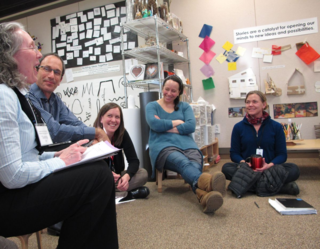
Last month, a group of teachers and administrators from the Fishback Center for Early Childhood Education at South Dakota State University spent two days engaged in observation, investigation, and conversation at Opal School. In this post, Dr. Kay Cutler, Professor of Early Childhood Education and Director of the Center, discusses the experience and the influence it has had since.
by Kay Cutler
Tammy Clark, Laura Gloege, Ashlee Haselhorst, Amber Engelhardt, Flora Harmon, and I visited the Opal School for two days of professional development. During that time, we had the opportunity to observe in classrooms, study documentation and the process of creating and using it, and talk with teachers from the school.
We noticed how the teachers conveyed a sense of wonder and curiosity in their conversations. We noted their word choices and discussed their intentionality behind their choices. We observed the uniform nature of inquiry occurring within the entire school, that is, the inquiry-strategies and dialogue strategies used had common threads throughout all age groups and that resonated with us. We found that Opal School was a community of sincere relationships both with each other and with the world around them. Finally, we noted their commitment, their engagement, and their confidence to take risks when using new inquiry questions. All that we saw and discussed inspired us!
During the last month, I have been looking for and noticing how our visit with the teachers of the Opal School has affected our thinking and practices. I have noticed that we have re-engaged and renewed our commitment to conveying ideas with our colleagues and to conveying ideas with the teacher candidates. One example of this was a drawing workshop with teacher candidates to emphasize material placement and intentional questions and comments that focused on details.
I have noticed changes in classroom schedules to honor time and dialogue around a morning meeting. The children have responded to the invitation with extended dialogue about what the word, ’hypothesizing’ meant and how they might make some hypotheses in their small groups. It will be exciting to see where this goes in the coming weeks.
As a center, we have begun a study of the shared meaning in our values at a level that involved families, teacher candidates, and faculty. In addition, we have engaged ECE majors, who are studying methods and curriculum, to study the definitions offered in a teacher-research fashion in order to distill the shared meaning for each word and create a formation of definitions to be put into our Gathering Space. So far we have cracked open the word, communication and have begun cracking open the word, inquiry.
Thank you Opal School team for being such an outstanding group of leaders!
Thank you, Kay, for sharing your reflections: It was an honor hosting you at Opal School, and it’s important that we understand what meaning groups make of their time here. Today, a study group organized by Lesley University completes a weeklong study tour. The Fishback group had six people from one center; the Lesley group is comprised of ten people from around the world. I wonder:
- How does the composition of the group shift the nature of the conversations here? How does it influence the sustained effect beyond the time spent at Opal?
- How does the amount of time spent at Opal School reveal different dimensions of the work – and how can we get closer to what you get from a longer time here while minimizing the effect on teachers and children?
- How can we find out more from others about the meaning their making from their time at Opal School a month, season, or year after their time here?


